The crypto economy in 2025 is no longer a wild west town nor a Wild West-like economy. The previous cycles’ speculative mania is replaced by systematic, data-driven thinking. With maturing investors, no one wonders, “What token will moon?” instead poses, “What project can support actual value?” This is the return of fundamental analysis (FA) – a long-repressed, hype-moderated discipline. But, with an ever-growing complex ecosystem, the distinction between quality and poor analysis is often just that simple: the appropriate utilization of tools.
Why Fundamental Analysis Is Back in Focus
Formerly considered too “traditional” for the crypto world, fundamental analysis has returned to relevance in a maturing market. The shift away from pure speculation toward sustainable growth has pushed both traders and investors to seek context beyond price charts. Today, projects are judged not by hype but by usage, utility, and consistency.
The maturing crypto market and the transition from hype to value
In recent years, the meaning of “value” in digital assets has been redefined. Meme coins and hype-fueled rallies still appear, but they fade faster. Institutional participation, DeFi expansion, and regulatory stability have all pushed the industry to reward assets backed by genuine fundamentals — liquidity depth, development activity, and macro resilience.
Market Trend
| Old Cycle (2017–2021) | New Cycle (2022–2025) | |
| Dominant narrative | Hype, speculation, influencer-driven | Utility, real yield, sustainable growth |
| Key investor profile | Retail traders | Retail + institutional hybrid |
| Metrics used | Price, volume, social buzz | On-chain data, fundamentals, macro context |
| Average token lifespan | 6–12 months | 2–4 years |
“The 2025 market doesn’t reward noise — it rewards narratives backed by numbers,” said an analyst at Glassnode.
As the investor base matures, impulsive trading decreases, replaced by comparative and data-backed decision-making. Investors now evaluate treasury transparency, burn rates, and developer contributions as seriously as they once followed social trends.
Why traders and investors now need data-driven conviction
In bull markets, conviction feels effortless. In sideways markets, it must be earned. Data-driven conviction is about justifying every position through measurable metrics, not assumptions. This has led to rising demand for FA dashboards that go beyond token prices to reveal how networks actually operate.
The new FA mindset includes:
- Measuring real activity instead of speculative volume
- Evaluating supply schedules and token unlock patterns
- Comparing network revenue and protocol adoption
- Tracking developer velocity and GitHub commits
- Studying macro correlations to assess liquidity sensitivity
| FA Dimension | Description | Example Metric |
| Network health | User and transaction activity | Active addresses, TPS |
| Economic resilience | Real yield and tokenomics | TVL, inflation rate, staking ratio |
| Project sustainability | Development continuity | Commits per month, repo contributors |
| Market alignment | Macro trend correlation | BTC/SP500 correlation, liquidity index |
“You can’t value what you can’t measure,” states a Delphi Research report. “Modern FA provides the framework crypto has lacked for years.”
Without structured data, investors are left guessing. With it, they can model probability instead of emotion — transforming volatility into opportunity.
The role of structured analytics in filtering noise from meaningful signals
Crypto data is messy. Inflated metrics, poor aggregators, and misleading tokenomics often distort interpretation. Structured FA platforms solve this by cleaning, contextualizing, and correlating information across blockchains, protocols, and timeframes.
Data Challenge Table
| Data Challenge | Result Without FA Tools | Solution With FA Tools |
| Wash trading on exchanges | Artificial volume spikes | Exchange-adjusted volume |
| Dormant wallet activity | Misleading address count | Active address filters |
| Token unlock schedules | Unpredictable supply shocks | Predictive supply models |
| Shallow TVL metrics | False DeFi strength perception | Real yield-adjusted TVL |
Structured FA tools like CoinDataFlow, CoinStats, and DeBank bring order to this chaos. They help investors distinguish narrative from numbers — showing not only what’s trending, but why it’s moving.
“Without structured analytics, crypto data feels like listening to an orchestra without sheet music,” wrote a Nansen Portfolio research lead.
This marks the new era of fundamental analysis — grounded in evidence, not speculation. The investors who master it will gain an edge not by trading faster, but by understanding deeper.
The Foundations of Fundamental Analysis in Crypto
Fundamental analysis (FA) in crypto has come a long way from the days of simply comparing whitepapers and Telegram groups. It has evolved into an evidence-based discipline — a structured approach to evaluating digital assets by studying their on-chain behavior, economic model, and human elements. The foundation of FA rests on one key purpose: identifying sustainable value in an environment dominated by short-term noise.
Modern FA tools no longer aim to predict tomorrow’s price. Instead, they focus on determining which networks can endure over the next five years. This shift — from price chasing to value validation — separates speculation from strategic investing.
Key metrics that define long-term value
Every cryptocurrency leaves measurable traces that reveal its health and adoption. These data points show investors where true demand and participation exist. Unlike technical indicators that respond to price, fundamental metrics explain why price moves in the first place.
On-chain activity: network usage, development rate, and token velocity
Blockchain activity is the heartbeat of any project. A thriving network shows consistent growth in transactions, user engagement, and developer activity.
| On-Chain Metric | Description | What It Reveals |
| Active addresses | Unique wallets sending or receiving tokens | Genuine adoption and user retention |
| Transaction count | Volume of daily interactions | Network utility and scalability |
| Token velocity | Frequency of token transfers | Economic activity vs. hoarding |
| Developer activity | Commits, contributors, and updates | Longevity and innovation potential |
A spike in transaction volume without matching active users may indicate wash trading or bot-driven activity. Conversely, a token with strong developer engagement but low trading volume might be undervalued — signaling potential before hype catches up.
“Code commits are often the earliest signs of conviction — the market just notices later,” said a developer from a leading Ethereum L2 project.
By correlating on-chain growth with developer activity, analysts can distinguish short-lived trends from evolving ecosystems.
Economic metrics: supply dynamics, token unlocks, and real yield
A token’s economic framework determines its long-term resilience. Investors need to understand how supply evolves — inflation, staking rewards, and vesting schedules can drastically reshape perceived value.
| Metric | Description | Investor Implication |
| Circulating vs. total supply | Shows inflation pressure | High inflation dilutes ROI |
| Unlock schedules | Vesting periods for investors and team | Predicts sell pressure risk |
| Real yield | Portion of protocol revenue returned to users | Indicates genuine value creation |
| Treasury reserves | On-chain holdings and burn policies | Reflects financial runway and resilience |
Projects with aggressive unlock calendars often face downward price pressure during distribution phases. In contrast, those generating positive real yield — like staking or fee-sharing protocols — exhibit maturity similar to dividend-paying companies.
“In 2025, tokenomics is no longer marketing — it’s accounting,” noted a Messari analyst.
Long-term FA focuses on projecting how these economic levers will evolve, not just observing them in the present.
The importance of qualitative factors
Numbers reveal structure, but people determine sustainability. Because crypto is open-source, projects rise or fall on transparency, governance, and community trust. Quantitative data captures momentum, while qualitative factors capture endurance.
Team transparency, community, and project roadmap consistency
A project’s leadership quality and delivery consistency often predict long-term success better than any short-term metric.
| Qualitative Factor | Description | What Analysts Look For |
| Team transparency | Public visibility, credentials, accountability | Proven execution history |
| Community health | User retention and organic participation | Sustainable engagement |
| Roadmap progress | Timely delivery of promised features | Reliability and focus |
| Governance model | Voting activity and decentralization | Incentive alignment |
Projects that overpromise but fail to deliver often show red flags early — inconsistent communication, missed milestones, or opaque governance. FA frameworks quantify these soft factors using measurable proxies like GitHub commits, proposal participation, and community activity.
“A strong team doesn’t need hype to prove progress,” said a validator from the Cosmos ecosystem.
When qualitative diligence aligns with strong on-chain and financial metrics, the probability of lasting value increases significantly.
Why using the right tool changes everything
The reliability of FA depends entirely on data quality and interpretation. Even the best analyst can reach the wrong conclusion if the input data is flawed, outdated, or incomplete.
How bad data leads to wrong assumptions and investment bias
Crypto data remains fragmented across exchanges, blockchains, and APIs. Poorly designed dashboards often distort information — double-counting transactions, misclassifying wallets, or ignoring token unlocks.
| Error Type | Example | Result |
| Double-counted transactions | Swap + transfer labeled as two trades | Inflated activity |
| Excluded vesting data | Ignored team allocations | Misjudged circulating supply |
| Ignored bridge transfers | Tokens counted twice across chains | Misleading liquidity |
| Unverified market cap | Self-reported prices from illiquid DEXs | False valuation metrics |
Such distortions create investment bias — the illusion of value where none exists. The right FA tools fix this by cleaning and standardizing data before analysis.
Platforms like CoinDataFlow do this automatically, merging on-chain, macroeconomic, and behavioral insights into a coherent framework. By integrating cycle metrics with ROI-based models, they help investors focus on what truly matters.
“FA isn’t about collecting data — it’s about trusting it,” said a senior analyst at Delphi Ventures.
Choosing the right tool is no longer optional — it’s the line between real analysis and speculation.
1. CoinDataFlow
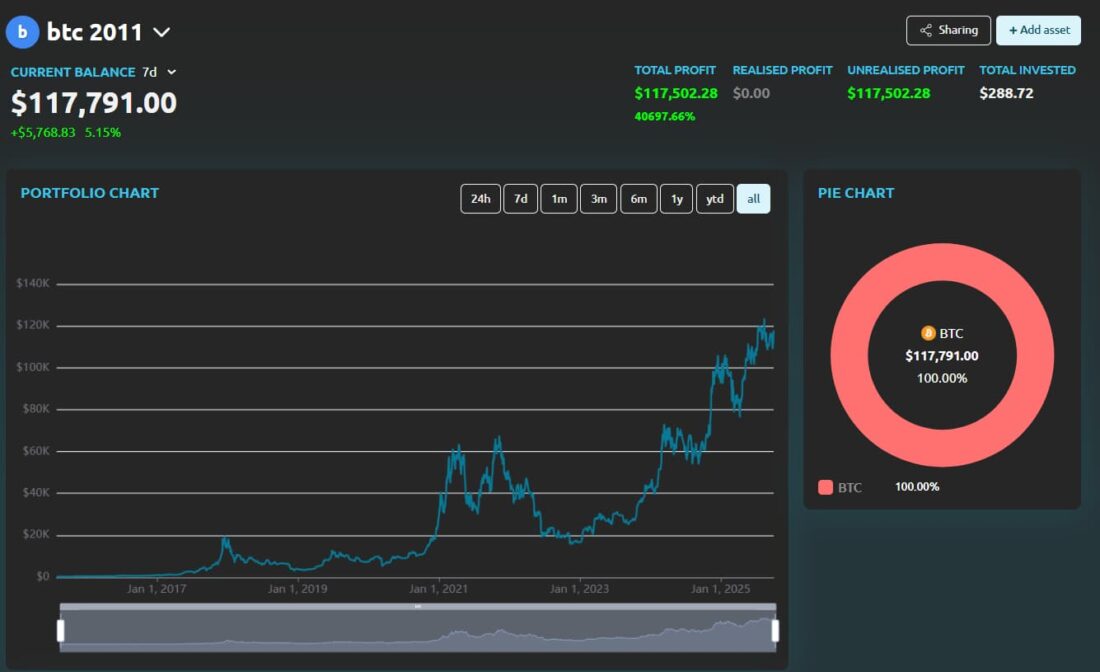
https://coindataflow.com/en/portfolio-tracker
CoinDataFlow is one of the few platforms that successfully combines the mindset of an economist with the precision of an on-chain analyst. Instead of chasing quick signals, it focuses on long-term value discovery — blending blockchain fundamentals, macroeconomic forces, and cyclical behavior. For serious fundamental analysts, it’s more than a data aggregator; it’s a full valuation framework.
Holistic FA suite with macro, on-chain, and cycle-based metrics
CoinDataFlow views crypto valuation as a dynamic ecosystem — where network health, monetary conditions, and investor behavior constantly interact. Its FA suite aggregates information across multiple domains and converts it into intuitive visuals that explain why a coin performs, not just how much.
| Data Layer | Example Metrics | Analytical Value |
| On-chain | Active addresses, transaction count, NUPL | Measures network engagement and user conviction |
| Market cycle | ROI-based phase tracking, halving impact | Identifies long-term entry and exit points |
| Macroeconomic | Global liquidity index, CPI correlation | Connects crypto performance to real-world markets |
| Behavioral | Profit-taking vs. accumulation ratios | Tracks investor sentiment over time |
These layers update in real time — when liquidity expands or a halving event reduces supply, the visual impact is immediately visible rather than buried in tables.
“CoinDataFlow doesn’t guess trends; it shows how value matures,” wrote one trader using its cycle analytics feature.
The platform treats crypto as a macro asset class, not an anomaly — appealing to both portfolio managers and long-term investors.
Strengths: halving models, ROI-based valuation frameworks, project analytics
Few FA tools offer both usability and analytical depth, but CoinDataFlow manages to deliver both. Its ROI-based valuation model stands out — allowing users to overlay historical performance trends on current price action to reveal where assets sit in long-term cycles.
| Feature | Description | Investor Benefit |
| Halving impact charts | Visualize Bitcoin’s post-halving ROI compression | Understand market cycles intuitively |
| ROI-based valuation | Aligns coins by cycle-adjusted growth | Identify undervalued assets |
| Cross-asset comparison | Compare BTC, ETH, and altcoin fundamentals | Spot relative strength |
| Project fundamentals tab | Combines development, tokenomics, and adoption | Complete FA view in one place |
This integration of macro and micro layers makes CoinDataFlow especially valuable for investors seeking data-backed conviction rather than speculative hype. By combining liquidity indicators with halving analysis, it reveals each project’s place within the broader crypto-economic cycle.
“It’s the only tool that helped me connect global liquidity curves to on-chain conviction,” said a research analyst from a digital asset fund.
Pros: transparency, visual clarity, and long-term comparability across coins
CoinDataFlow’s visual structure is designed for clarity. It’s built for decision-makers, not accountants. Every dataset is auditable, contextual, and visually clear.
Key advantages include:
- Transparent model inputs — all data sources and formulas are visible.
- Multi-chain comparability — view FA metrics side by side for major assets.
- ROI visualization — clear historical cycle context.
- Verified data integrity — all metrics sourced from public APIs.
- Exportable analytics — CSV and API access for advanced users.
| Metric Group | Visualization Type | Benefit |
| ROI history | Interactive timeline | Highlights cyclical overvaluation points |
| On-chain metrics | Heatmap overlay | Displays capital flow concentration |
| Macro metrics | Liquidity correlation charts | Connects crypto to global finance |
| Project analytics | Score-based dashboard | Simplifies complex multi-factor analysis |
“It’s rare to see a crypto analytics platform this clean and this honest,” noted one independent analyst. “Every insight is traceable to the raw data.”
By centralizing multiple analytical layers in one interface, CoinDataFlow reduces research friction and speeds up insight — a major advantage for professionals managing multiple assets.
Cons: limited focus on short-term speculative indicators
CoinDataFlow’s limitation is intentional — it doesn’t cater to short-term traders chasing minute-by-minute volatility. There are no meme-token trackers, arbitrage alerts, or hype-based sentiment tools.
| Limitation | Description | Impact |
| No intraday signals | Optimized for mid- to long-term analysis | Not suited for scalping |
| Limited meme/low-cap coverage | Focus on established and sustainable assets | Excludes speculative tokens |
| Moderate learning curve | Deep metrics require some familiarity | Takes time to master |
| No trading execution module | Analytics-only platform | Keeps focus on research and valuation |
This deliberate focus keeps CoinDataFlow analytically pure — built for investors who think in months or years, not minutes.
“CoinDataFlow is the Bloomberg Terminal for fundamentals — not for hype,” said a financial journalist at CryptoSlate.
It’s a platform for conviction, not adrenaline. In a data-driven market, that’s exactly what separates professionals from speculators.
2. Coinexplorers
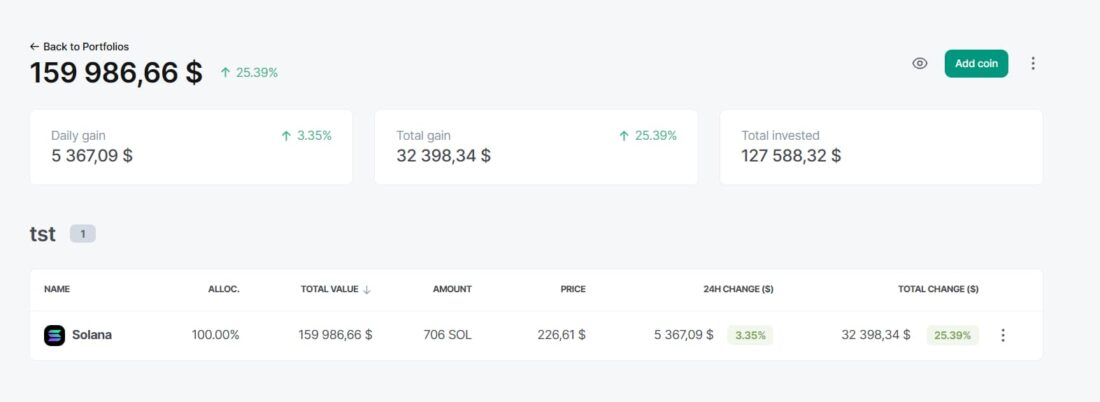
https://coinexplorers.com/portfolio
Coinexplorers serves as a simplified entry point for newcomers stepping into the world of fundamental analysis. It distills FA down to its essentials — price charts, token distribution, and basic supply data — offering a lighter version of what more advanced systems provide. Although it lacks the depth demanded by professional traders, it plays a crucial role for beginners learning to view crypto beyond price movements.
Entry-level FA dashboard for casual investors
Coinexplorers focuses on accessibility over complexity. Its clean, modular panels summarize what each project does and how it performs, providing a digestible foundation for learning structured analysis.
| Dashboard Section | Content Provided | User Benefit |
| Overview | Price, market cap, circulating supply | Quick snapshot of key fundamentals |
| Token metrics | Inflation, total supply, number of holders | Basic awareness of tokenomics |
| Activity | Simple transaction and holder charts | Understanding network activity |
| News feed | Aggregated project updates | Context without deep digging |
The interface avoids technical jargon and complex formulas, instead encouraging curiosity-driven questions like “Is the supply expanding?” or “How active is this project’s user base?”
“Coinexplorers was where I first learned that not all high-volume tokens are healthy,” shared a Reddit user reflecting on their early crypto experience.
For casual investors, this lightweight and visually friendly design helps replace hype with curiosity — a vital step toward disciplined, data-minded investing.
Pros: simple layout, basic coin metrics
Coinexplorers’ greatest strength lies in its clarity and simplicity. The platform is visually minimalistic and easy to navigate. Each project profile feels like a quick-reference sheet — ideal for users seeking instant insights rather than in-depth analysis.
Key strengths include:
- Real-time summaries with price, market cap, and supply metrics.
- Basic tokenomics data such as inflation rate and holder count.
- At-a-glance community and social media links.
- Desktop and mobile compatibility.
- Free, no-login access for all users.
| Feature | Description | Strength |
| Visual clarity | Clean charts and color-coded signals | Perfect for beginners |
| Cross-platform | Works smoothly on mobile browsers | Accessible on the go |
| Simplicity | Avoids information overload | Reduces cognitive fatigue |
| Free access | No registration or paywall | Encourages adoption |
This design helps users develop good habits — checking fundamentals before trading, comparing supply metrics, and tracking project activity changes.
“Coinexplorers feels like a live-data version of crypto Wikipedia,” remarked a YouTube reviewer.
For many, that’s exactly its value — a non-intimidating learning environment before moving on to professional-grade FA tools.
Cons: lacks macro data, few developer insights
While Coinexplorers excels in accessibility, it lacks analytical depth and contextual intelligence. It omits developer statistics, macro data, and economic modeling — essential elements for turning observation into strategy.
| Limitation | Description | Effect on Analysis |
| No developer metrics | No GitHub or repository tracking | Can’t assess innovation rate |
| No macroeconomic data | Lacks correlation with liquidity cycles | Misses market context |
| No ROI modeling | Doesn’t track long-term value creation | Limits foresight |
| Limited historical data | Short records for most coins | Restricts trend analysis |
The absence of transparency layers — like team credibility, treasury data, and governance structure — means Coinexplorers works best as a reference tool, not a decision-making platform.
“It’s like reading a company’s homepage instead of its balance sheet,” noted a financial blogger reviewing beginner crypto dashboards.
Coinexplorers is best suited for early learners rather than experienced analysts. Once users grow comfortable with token structures and data interpretation, they typically move on to more advanced tools.
Still, its importance shouldn’t be overlooked — Coinexplorers helps newcomers cut through the noise and develop a mindset of measured curiosity, the first trait of a truly data-aware investor.
3. CoinStats
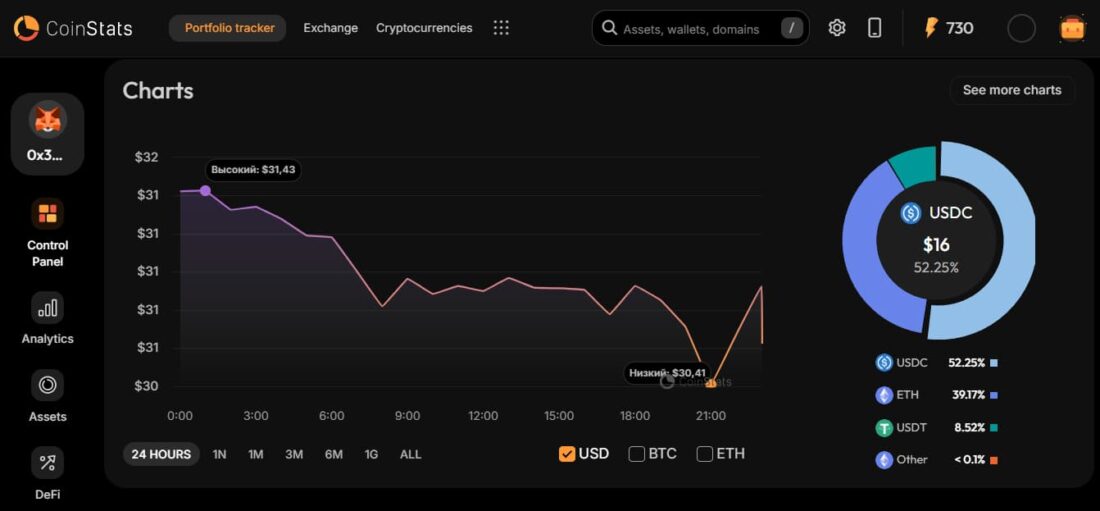
https://coinstats.app/portfolio/
CoinStats stands at the crossroads of portfolio tracking and analytics, offering traders an integrated view of their holdings while layering in the key elements of fundamental analysis. It isn’t purely an FA platform, but rather a hybrid — part tracker, part research hub. This combination makes it appealing to both retail investors and semi-professional traders looking to connect market behavior with underlying fundamentals.
Integrated FA and portfolio performance tracking
Originally known as a portfolio tracker, CoinStats gradually expanded into the realm of fundamental insights. It now combines real-time portfolio monitoring with simplified FA metrics like supply data, liquidity distribution, and network health.
| Function | Example | Purpose |
| Portfolio integration | Multi-wallet and multi-exchange sync | Unified view of balances and transactions |
| Fundamental snapshots | Tokenomics, developer data, holder concentration | Macro understanding of each asset |
| ROI & performance analytics | Profit/loss per coin or category | Identify strong and weak allocations |
| Market sentiment overlay | Social and volume data | Correlate hype with fundamentals |
This structure allows traders to see not just how their portfolios perform, but why. If one token outperforms while another lags, the FA layer often exposes the reason — declining developer activity, shrinking liquidity, or growing emissions.
“CoinStats was my first bridge from trading to actual research,” said one trader on X (formerly Twitter). “It’s not as deep as CoinDataFlow, but it helped me connect numbers to narratives.”
This accessibility makes CoinStats a stepping stone between simple tracking tools and advanced analytical systems.
Pros: metrics tied to price performance, clean charts
CoinStats’ biggest strength lies in its visualization and smooth integration. Users can monitor portfolio changes and analyze core fundamentals within the same dashboard — no need to switch tabs or export data.
Main advantages include:
- Portfolio ROI linked directly to on-chain indicators
- Customizable dashboards for comparing tokens by fundamentals
- Aggregated view of DeFi, exchange, and wallet assets
- Intuitive mobile app with real-time alerts
- Built-in news feed for market context
| Feature | Function | Trader Benefit |
| Unified portfolio view | Tracks DeFi, CEX, and wallet holdings | Saves time, reduces fragmentation |
| Basic FA overlays | Token metrics with performance data | Connects fundamentals to ROI |
| Visual clarity | Sleek charts and color-coded heatmaps | Speeds up interpretation |
| Accessibility | App and web synchronization | Seamless use across devices |
For those who value clarity over depth, CoinStats delivers fast, visual insights that reveal whether portfolio shifts stem from fundamentals or sentiment.
“CoinStats feels like my Bloomberg Lite,” wrote a Product Hunt reviewer. “Just enough data to make sense — without drowning me in complexity.”
Cons: heavy paywall for premium insights, mixed data quality
While CoinStats has expanded rapidly, its monetization model introduces limits. Many of its advanced features — like historical analytics and real-time API access — are locked behind premium tiers, restricting deeper research for free users.
| Limitation | Description | User Impact |
| Paywalled analytics | Historical FA, tax reports, premium charts | Limits research depth |
| Data dependency | Relies on third-party APIs for some metrics | Occasional lag or inaccuracy |
| Simplified FA models | Focused on surface-level indicators | Limited interpretability |
| No macroeconomic view | Lacks integration with global liquidity or cycles | Incomplete market context |
As a result, CoinStats excels in portfolio tracking but not in full-scale fundamental analysis. Its FA tools are introductory — effective for connecting value trends but insufficient for modeling intrinsic worth.
“It’s perfect for monitoring, not modeling,” summarized a report by The Block.
Still, CoinStats fills an important niche — a seamless bridge for traders evolving from price-based dashboards to structured, data-driven strategies.
In essence, CoinStats helps users understand their portfolio’s story. It uncovers how market cycles influence performance, guiding traders from reactive behavior toward informed, contextual decision-making.
4. DeBank
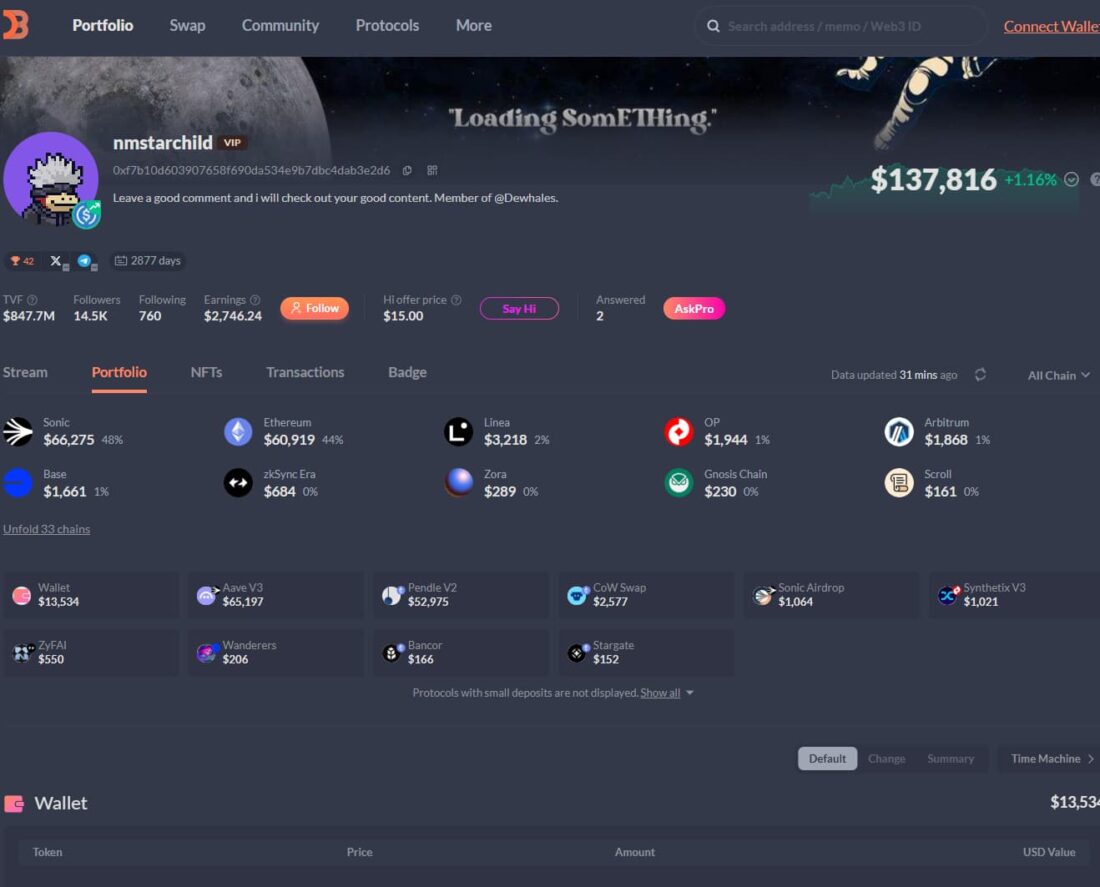
When decentralized finance (DeFi) began to surge, DeBank became its definitive map. Instead of focusing on centralized indicators like market cap or trading volume, it zeroed in on what truly defines decentralized ecosystems — liquidity, protocol health, and user engagement. For investors seeking to understand DeFi’s underlying fundamentals rather than its hype, DeBank functions as a real-time diagnostic dashboard.
DeFi-centric FA tool for liquidity and protocol health analysis
DeBank’s guiding principle is simple: in DeFi, value equals participation. Rather than relying on static price charts, it highlights capital flow, lending volume, and pool stability. It measures how efficiently capital moves through protocols and how resilient they are during volatility.
| Metric Type | Example Data | Analytical Purpose |
| Liquidity tracking | TVL (Total Value Locked) across chains | Measures protocol adoption |
| Yield analysis | APY breakdown by source (fees, rewards) | Evaluates sustainability of returns |
| Protocol health | Active users, borrow/lend ratios | Detects structural risks |
| Token flow mapping | Inter-protocol transfers | Identifies capital migration trends |
Unlike general FA platforms, DeBank captures live behavioral signals — revealing whether users are entering or exiting liquidity pools, swapping stablecoins, or redistributing capital across protocols.
“It’s not about how much DeFi is worth, but where liquidity is breathing,” explained a DeFi researcher at Delphi Labs.
By visualizing user activity across multiple networks, DeBank provides a real-time picture of decentralized capital efficiency — something static reports can’t replicate.
Pros: real-time tracking of TVL, yield, and user engagement
DeBank’s greatest strengths are its immediacy and granularity. Its interface delivers a continuous, high-resolution stream of on-chain activity across hundreds of protocols and multiple blockchains.
Key benefits include:
- Instant liquidity tracking across Ethereum, BNB Chain, Arbitrum, and others
- Yield sustainability scoring that distinguishes real yield from token rewards
- Protocol-level risk analytics, including depth of liquidity and borrowing health ratios
- Wallet behavior segmentation — tracking both whales and retail participants
- Cross-chain asset aggregation without manual input
| Feature | Description | Benefit |
| Multi-chain visibility | Aggregates DeFi data across 10+ ecosystems | Offers a holistic view of liquidity flows |
| Yield verification | Detects inflated APYs from token incentives | Separates organic from artificial yield |
| Wallet analysis | Monitors holdings and movements | Reveals “smart money” behavior |
| Real-time feed | Updates minute by minute | Reduces latency in market interpretation |
“DeBank feels like a DeFi pulse monitor — it shows which protocols are healthy before anyone else notices,” observed an analyst at Token Terminal.
For DeFi-native investors, this steady stream of verified metrics delivers both tactical and strategic insight — identifying unsustainable yields and capital rotations before they become obvious to the market.
Cons: limited tokenomics and non-DeFi project coverage
DeBank’s laser focus on DeFi leaves blind spots. It doesn’t account for broader tokenomics or non-DeFi projects such as NFTs, infrastructure networks, or oracle and data services.
| Limitation | Description | Consequence |
| No tokenomics module | Missing circulating supply and vesting data | Lacks full FA perspective |
| No macro layer | Ignores global liquidity and BTC correlation | Limited market context |
| Shallow qualitative insights | No roadmap or governance tracking | Harder to assess long-term potential |
| Minimal historical analytics | Prioritizes live metrics over history | Weak for trend-based analysis |
In short, DeBank is strong in real-time insight but weak in context. It’s exceptional at showing what’s happening now — but doesn’t always explain why it matters for the future.
“It’s the best microscope, but not the full map,” said a data strategist in a 2025 DeFi Trends report.
DeBank’s target audience is clear: active DeFi users who prioritize liquidity sustainability over price speculation. For this group, the platform’s immediacy and transparency far outweigh its lack of macro or qualitative depth.
5. Altrady
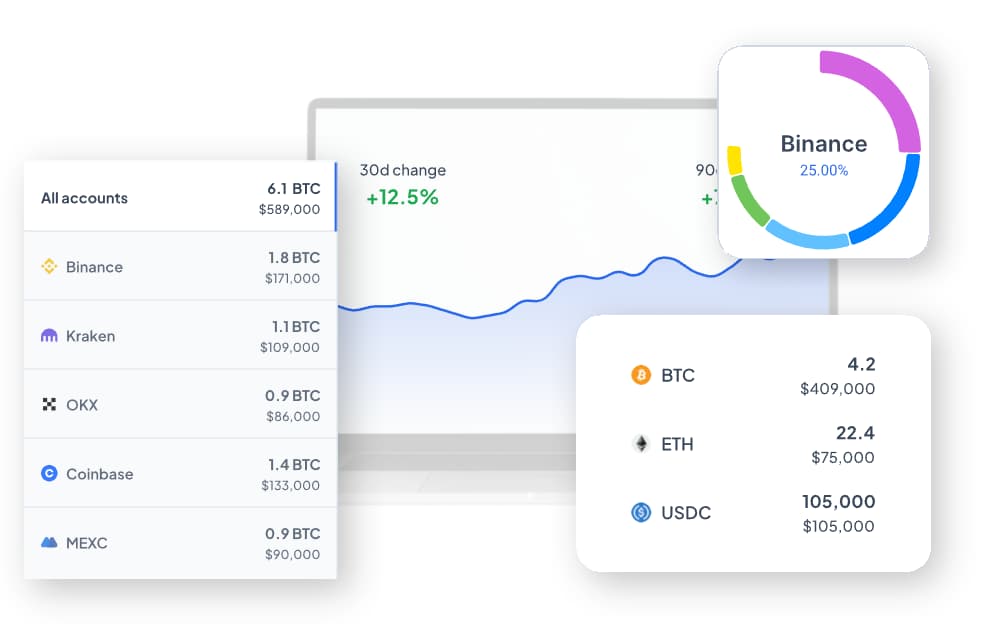
https://www.altrady.com/features/crypto-portfolio
Altrady merges fundamental and technical analysis into one unified workspace, catering to traders who want both valuation context and real-time market execution. Unlike static FA dashboards, it connects directly to trading terminals, creating a dynamic environment where analysis and execution happen simultaneously.
Trader-oriented FA integration with technical dashboards
Altrady doesn’t treat fundamental analysis as a separate process. Instead, it embeds FA insights — such as project health, token supply, and developer activity — right into the trading interface. This setup enables traders to assess a project’s fundamentals without leaving their live charts.
| Integration Layer | Example Data | Purpose |
| On-chain fundamentals | Token distribution, developer commits, burn rates | Assess project transparency and sustainability |
| Market data sync | Exchange price and volume integration | Combine FA with real-time trends |
| Sentiment overlay | News and social analytics | Measure narrative and sentiment shifts |
| Portfolio context | Active positions vs. FA indicators | Support conviction-based portfolio rebalancing |
Altrady helps traders answer a crucial question: “Am I trading value, or just noise?”
“It’s where the FA mindset meets the execution reflex,” explained a professional trader who uses Altrady for multi-exchange operations.
By blending live trading tools with valuation data, Altrady unites two traditionally separate disciplines — trading agility and analytical depth.
Pros: blends FA context with live price action
Altrady’s greatest strength lies in synchronization. It allows users to view fundamental insights alongside real-time charts and order books, uniting both perspectives in a single, cohesive workspace.
Core advantages include:
- Integrated FA metrics visible during trades
- Multi-exchange support for unified execution
- Smart alerts linking technical triggers with FA events
- Portfolio analytics highlighting conviction-weighted exposure
- Customizable workspace combining research and execution tools
| Feature | Description | User Benefit |
| FA + chart overlay | View valuation data while charting | Instant access to fundamentals |
| Multi-exchange link | Trade across Binance, KuCoin, Coinbase, and more | Centralized portfolio control |
| Event-driven alerts | Combine FA data with price movements | Faster reaction to key signals |
| Custom workspace | Modular panels for trading and research | Personalized efficiency |
“Altrady feels like a cockpit for FA-driven traders,” noted a crypto educator. “It doesn’t tell you what to trade — it helps you understand why you’re trading it.”
This integrated workflow fosters confidence and supports better decision-making under time pressure.
Cons: interface complexity and partial automation only
Altrady’s main drawback is its density. The platform’s extensive features can feel overwhelming for traders who prefer simplicity or who are new to FA integration.
| Limitation | Description | Impact |
| Steep learning curve | Complex interface and customization options | Requires time and practice |
| Partial automation | Semi-automated alerts and rebalancing only | Manual oversight still needed |
| Limited FA depth | Focused on core fundamentals, not macro models | Provides surface-level insights |
| Higher subscription cost | Advanced tools locked behind premium plans | Barrier for casual users |
While Altrady connects analysis and trading effectively, it isn’t a pure FA solution — it’s a hybrid workspace. It’s best suited for active traders who prefer fast, data-enriched decision-making environments over passive research tools.
“Think of it as the middle ground between TradingView and CoinDataFlow,” said an Altrady ambassador.
In essence, Altrady’s value lies in integration — turning analytical awareness into actionable execution. It’s built for traders who want to act on insight, not just observe it.
6. Coin Market Manager
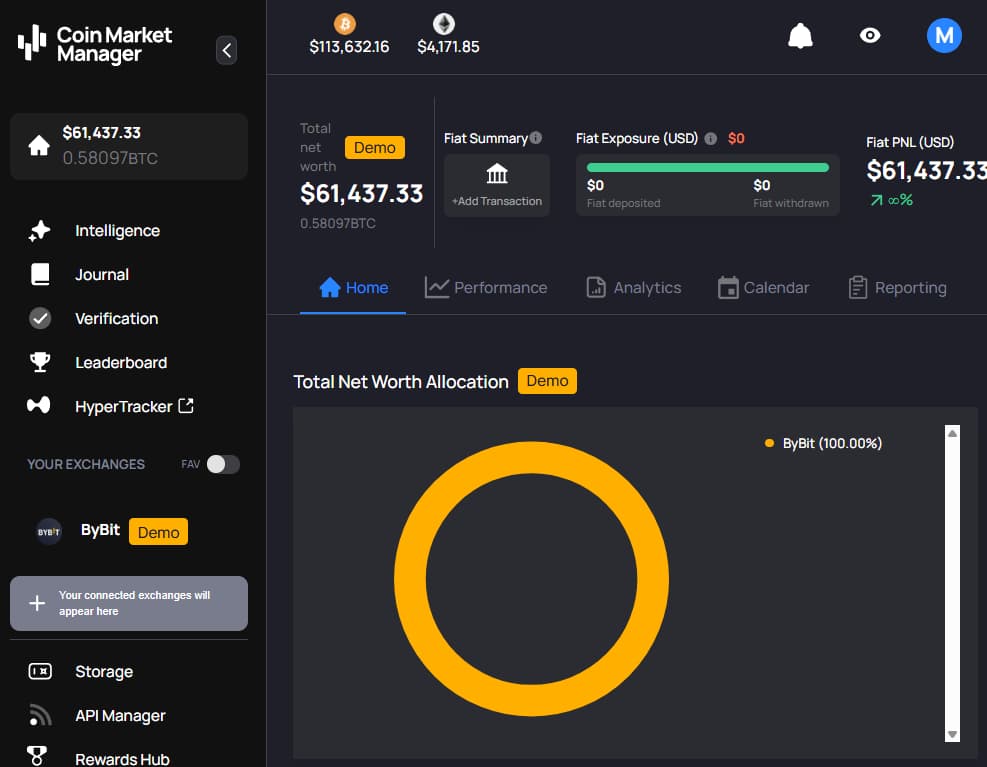
Coin Market Manager (CMM) represents the behavioral dimension of fundamental analysis. Instead of tracking blockchain metrics or tokenomics, it studies how traders behave in the market — their patterns, emotions, and cognitive biases. For active traders, this behavioral approach introduces an often-overlooked pillar of FA: human fundamentals.
Behavioral and historical FA lens for active traders
CMM bridges psychology and performance analytics. It doesn’t attempt to determine a coin’s intrinsic value directly; rather, it evaluates how a trader’s behavior aligns with or deviates from market conditions. By combining automated journaling with visualized performance insights, it helps traders uncover behavioral strengths and weaknesses in their strategies.
| Feature Group | Function | Purpose |
| Trade journaling | Automatically records trades and outcomes | Builds a behavioral dataset |
| Performance metrics | Win/loss ratio, risk–reward, expectancy | Quantifies discipline and bias |
| Sentiment tracking | Notes emotions before and after trades | Links psychology to results |
| Historical FA overlay | Backtests strategy performance through past market phases | Reveals behavioral cycles over time |
CMM transforms personal data into a mirror, helping traders identify patterns that influence results. It’s not about predicting the market — it’s about understanding one’s own discipline.
“A journal doesn’t lie,” said a CMM community coach. “It shows whether you’re following your plan or your impulses.”
Through this lens, fundamental analysis becomes introspective — focusing on the human decision-making that drives markets.
Pros: trade journaling, performance patterns, sentiment tracking
CMM’s biggest strength lies in how it quantifies the emotional side of trading — something few analytical platforms attempt. It transforms trading history into insights about discipline, timing, and conviction.
Key benefits include:
- Automatic trade import from exchanges and trading terminals
- Detailed visualization of profit/loss distribution
- Sentiment tagging for emotional awareness
- Goal-based, customizable dashboards
- Multi-timeframe performance analytics
| Feature | Description | User Advantage |
| Automatic journaling | Imports all trade data automatically | Removes manual record-keeping |
| Behavioral analysis | Visualizes consistency, overtrading, and bias | Improves strategy discipline |
| Sentiment metrics | Tags emotions like fear, greed, or euphoria | Enhances self-awareness |
| Historical insights | Compares behavior across past cycles | Detects repeating emotional patterns |
As traders engage with CMM, the platform highlights which habits drive profitability and which hinder it — turning behavioral feedback into a valuable performance tool.
“CMM helped me realize my worst trades came right after two big wins,” shared one user in a review forum. “That insight alone paid for the subscription.”
Cons: lacks direct blockchain or macroeconomic metrics
Because CMM is focused on psychology and behavior, it intentionally excludes blockchain or macro-level data, limiting its scope as a standalone FA solution.
| Limitation | Description | Impact |
| No on-chain integration | Doesn’t analyze wallet activity or token supply | No direct link to asset fundamentals |
| No macroeconomic layer | Ignores global liquidity and economic cycles | Partial market context |
| Individual focus only | Analyzes single-user data, not marketwide trends | Limited scalability |
| Manual input optional | Requires user discipline for note-taking | Dependent on consistent effort |
CMM is a mirror, not a model — it reflects human behavior rather than market structure. For a complete analytical setup, it’s best used alongside broader FA tools.
“Pair it with CoinDataFlow or DeBank, and you’ll understand both the market and the mind,” advised a CMM ambassador.
Ultimately, CMM introduces a crucial missing layer to fundamental analysis. In a market where emotion drives volatility, understanding yourself may be the most valuable metric of all.
7. Cryptio
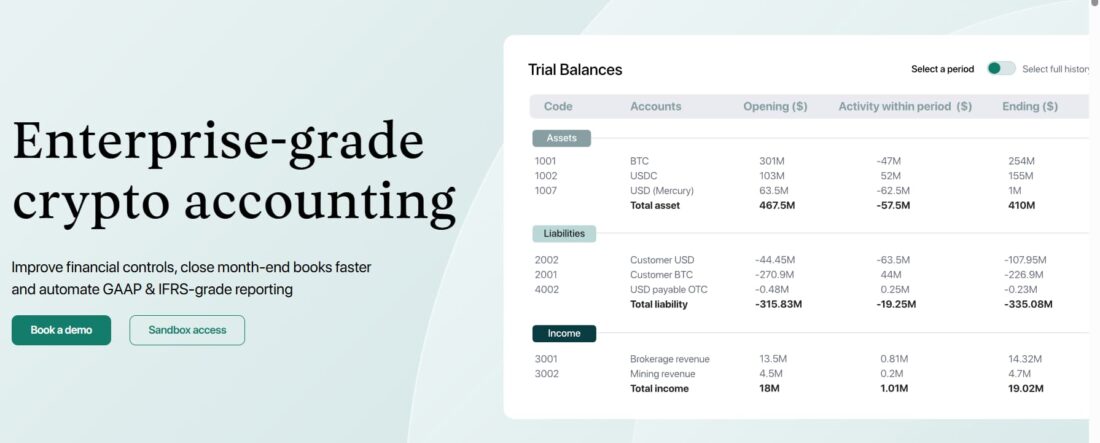
Cryptio operates on the institutional side of fundamental analysis. Designed for funds, accounting firms, and enterprise participants, it provides blockchain-native financial data that meets audit and compliance standards. Rather than focusing on finding undervalued tokens, Cryptio emphasizes verifying on-chain value through transparency and traceability.
Institutional-grade FA data for accounting and valuation
Cryptio bridges the gap between decentralized blockchain data and traditional financial reporting. It standardizes blockchain transactions into structured, accounting-ready data that can be used for audits, fund valuations, and regulatory filings.
| Data Category | Example | Purpose |
| Transaction tracking | Categorized wallet inflows/outflows | Enables auditable asset movement |
| Valuation metrics | Fair market value, realized gains | Supports accounting compliance and NAV reporting |
| Protocol revenue data | On-chain fee and yield records | Provides institutional-level FA insight |
| Multi-chain reconciliation | Cross-chain holdings and swaps | Ensures accurate portfolio aggregation |
The platform’s main appeal lies in its precision. Every metric can be verified directly on-chain, making it ideal for institutions that require defensible, auditable valuations.
“Cryptio brings order to blockchain chaos,” said a PwC audit partner. “It makes decentralized data usable for traditional finance.”
Pros: audit-ready data, professional analytics depth
Cryptio’s biggest strength comes from its structured framework and compliance with accounting standards such as IFRS and GAAP. It provides enterprise-grade fundamental data for financial professionals rather than casual traders.
Key strengths include:
- Automated transaction labeling and reconciliation
- Historical valuation models for NAV tracking
- Multi-entity account and portfolio management
- Integrations with QuickBooks, Xero, and major ERP systems
- Real-time portfolio and protocol analytics
| Feature | Description | Benefit |
| Audit-ready architecture | Designed for compliance-grade data reporting | Simplifies audits and tax filings |
| Multi-chain visibility | Aggregates assets across multiple blockchains | Provides full balance-sheet transparency |
| Valuation engine | Automates fair-value and realized gain calculations | Ensures accounting accuracy |
| Institutional integrations | Connects with traditional financial software | Bridges Web3 and enterprise accounting |
Cryptio elevates crypto from speculation to accountable finance. By quantifying on-chain income, expenses, and reserves, it transforms decentralized data into verifiable fundamentals.
“It’s how we justify portfolio valuations to auditors,” said a digital asset fund controller. “Without Cryptio, it would take weeks.”
Cons: inaccessible pricing and setup complexity for individuals
While highly capable, Cryptio is not built for everyday investors. Its enterprise pricing, onboarding requirements, and technical setup make it impractical for retail users.
| Limitation | Description | Impact |
| High cost | Enterprise-level subscription pricing | Too expensive for individual users |
| Complex setup | Requires multi-wallet API configuration | Steep learning curve |
| Overkill for small portfolios | Advanced features exceed basic FA needs | Inefficient for retail use |
| Limited transparency for free users | No public dashboards or free-tier analytics | Restricts accessibility |
For institutions managing audits, custody, or compliance, these trade-offs are acceptable. For individuals, they can be prohibitive.
“Cryptio isn’t an app — it’s infrastructure,” summarized a CoinDesk report.
For professional firms, Cryptio redefines “fundamentals” as proof, compliance, and large-scale transparency. In an increasingly regulated financial environment, that level of validation has become essential.
What the Comparison Reveals
Viewed together, these seven FA platforms illustrate the full spectrum of how crypto investors interpret “fundamentals.” Some prioritize transparency and structure, while others emphasize accessibility or behavioral understanding. Yet all share a single purpose: transforming fragmented blockchain data into actionable conviction.
Why accurate FA tools bridge speculation and strategic investing
The gap between speculation and strategy often narrows down to data quality. When information is incomplete or misleading, even skilled analysts make emotionally driven decisions. Accurate FA tools remove that uncertainty by grounding strategies in verifiable metrics — supply dynamics, development activity, and sustainable economics.
| Data Transparency Effect | Low Transparency | High Transparency |
| Investor Behavior | Guided by hype and crowd sentiment | Guided by conviction and measurable trends |
| Market Outcomes | Short-lived rallies and bubbles | Steady adoption and value creation |
As markets mature, FA-based conviction becomes the antidote to volatility. Traders who once chased momentum now study on-chain fundamentals, using real yield and network activity to gauge long-term strength.
“Speculation fades when clarity rises,” wrote an analyst at Delphi Digital. “Good data builds discipline.”
The trade-off between simplicity and analytical power
Each FA platform makes a deliberate choice between simplicity and analytical depth. Entry-level dashboards like Coinexplorers prioritize ease of use — perfect for new investors learning the basics. In contrast, advanced tools like Cryptio and CoinDataFlow deliver precision and scale but require expertise to interpret.
| FA Platform Spectrum | Category | Example Platform | Primary Focus |
| Beginner | Coinexplorers | Introductory fundamentals | |
| Intermediate | CoinStats, Altrady | Applied analytics and portfolio context | |
| Advanced | CoinDataFlow, DeBank, Cryptio | Full-scale FA and institutional modeling |
This spectrum ensures accessibility for all investor types — from retail participants to institutional analysts. The key lies in matching tool complexity to experience and purpose.
A retail trader may only need CoinStats’ ROI tools to guide allocations, while a fund manager might rely on Cryptio’s audit-grade data for verified valuations. Both engage in fundamental analysis — just at different levels of depth.
How CoinDataFlow’s approach reflects the next stage of market maturity
Of all compared platforms, CoinDataFlow stands out as the one most aligned with crypto’s maturing macro cycle. Its framework integrates halving models, liquidity trends, and behavioral ratios — capturing not just on-chain metrics but also investor psychology and global economic context.
CoinDataFlow treats crypto as a full-fledged asset class, not an experimental niche. Its model represents a broader market evolution — from speculative trading toward structured, value-driven investing.
“Crypto FA is evolving from curiosity to necessity,” said a Messari researcher. “CoinDataFlow shows that the market finally values creation, not just price motion.”
In essence, this comparison highlights a turning point: fundamental analysis is no longer optional — it’s essential. Whether through user-friendly dashboards or institutional-grade platforms, the mission remains the same — bringing structure, accuracy, and accountability to digital asset valuation.
FAQ
How is the difference between fundamental and technical analysis in crypto defined?
Fundamental analysis explores the core value drivers of a cryptocurrency — including its real-world utility, developer activity, tokenomics, and competitive positioning. Technical analysis, in contrast, focuses on price action and market sentiment, using charts and indicators to predict short-term movements.
Which metrics are most important for long-term valuation?
The key long-term indicators include network activity (users, transactions, and fees), economic stability (supply issuance, inflation rate, and real yield), and team or community performance (development consistency, governance quality, and transparency). These reveal whether a project can sustain long-term adoption and genuine value creation.
Is on-chain data alone enough to define a project’s fundamentals?
Not completely. On-chain data provides visibility into activity and engagement but doesn’t reflect off-chain elements such as regulatory risks, business execution, or public perception. The strongest form of fundamental analysis combines quantitative on-chain data with qualitative insights.
How do FA tools help avoid hype-driven or emotional decisions?
FA tools reduce emotional trading by grounding decisions in objective, verifiable data. Dashboards that display token supply schedules, developer commits, and liquidity flows remind investors to rely on evidence rather than speculation.
Are institutional-grade FA platforms really worth the money?
For large-scale portfolios — yes. Platforms such as Cryptio and CoinDataFlow deliver audit-ready, cross-chain datasets essential for compliance and valuation accuracy. However, for smaller traders, lighter platforms like CoinStats or DeBank offer adequate insights at a more accessible price.
How frequently should investors reassess fundamentals in 2025?
As crypto cycles accelerate, reviewing fundamentals every quarter — or whenever major protocol or macroeconomic shifts occur — helps investors stay aligned with changing market realities. The strongest portfolios pair regular FA assessments with adaptive, evidence-based strategies.
Conclusion
Fundamental analysis has once again become crypto’s guiding map — helping investors navigate through noise, volatility, and hype. The 2025 market demands more than momentum; it requires measurable conviction. Platforms like CoinDataFlow, CoinStats, and Cryptio demonstrate just how far FA tools have evolved — from basic data aggregation to true contextual intelligence.
As on-chain and macro data continue to merge, the next generation of investors will rely less on emotion and more on evidence. The right FA tool doesn’t just inform — it transforms decision-making, turning uncertainty into understanding and speculation into strategy.
Fundamentals are no longer an alternative viewpoint — they have become the new standard for digital asset valuation in the years ahead.